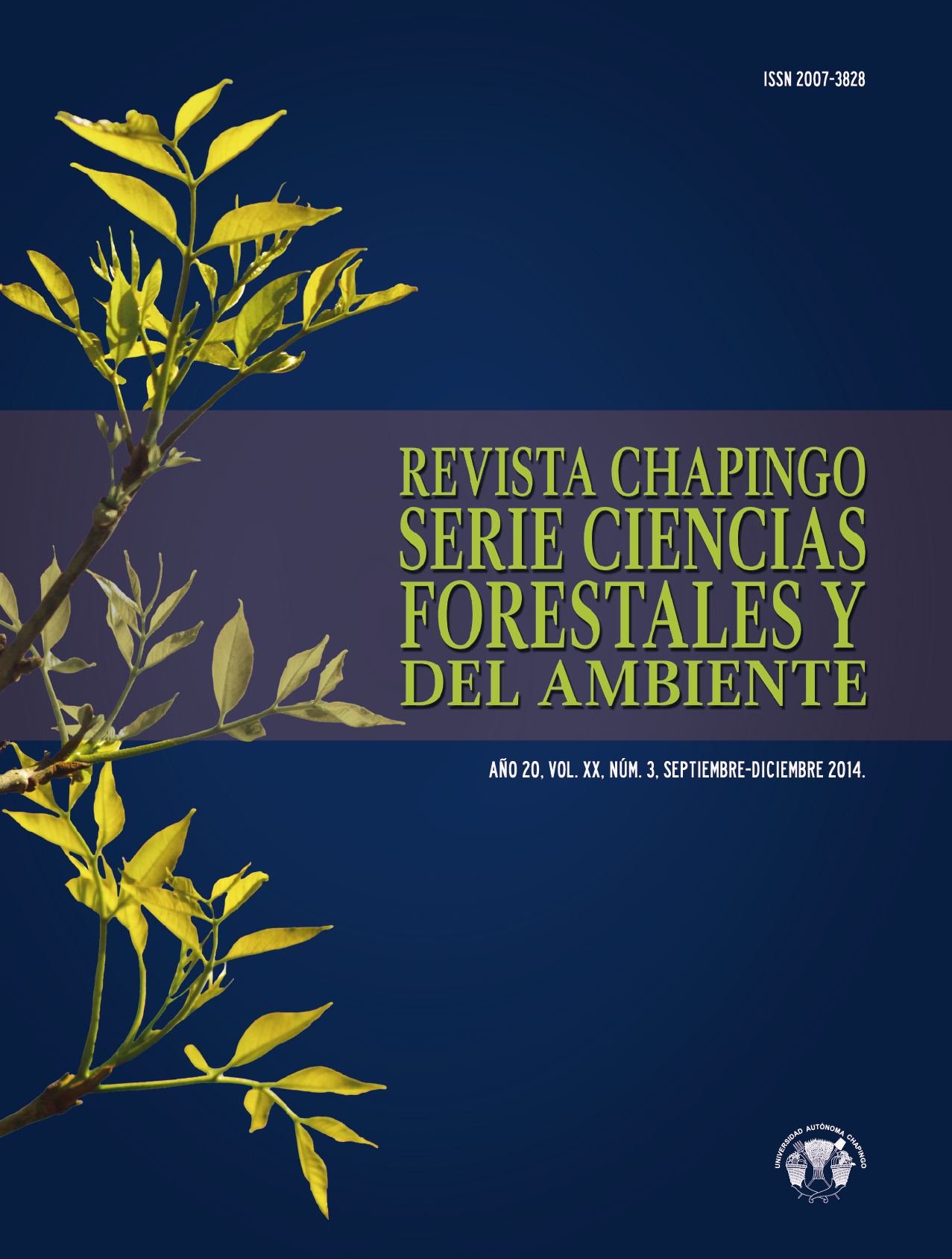Abstract
Cedrela odorata L. is a species distinguished by the quality of its wood. Cedar established in the field must adapt to changes in resource availability; survival is greater when the root system is associated with microorganisms that improve nutrition and growth. The aim of this study was to evaluate the effect of Rhizophagus intraradices and Azospirillum brasilense on the growth of C. odorata and its nitrogen (N) and phosphorus (P) uptake capacity. Cedar seeds were sown in pots in accordance with the following treatments: control, 15N-15P-15K fertilization, R. intraradices, A. brasilense, R. intraradices + A. brasilense, and R. intraradices + A. brasilense + A. brasilense + 15N-15P-15K fertilization. Morphological and physiological yield variables and root colonization were recorded every 28 days, and N and P contents at the end of the experiment (140 days). In general, R. intraradices promoted greater plant growth (P ≤ 0.05) of morphological and physiological yield components. The maximum height (97 cm) was recorded in plants with R. intraradices + A. brasilense + 15N-15P-15K fertilization, representing 40 % more height than the control. N and P increased with the inoculation of the microorganisms alone and combined.
References
Aguirre-Medina, J. F., & Kohashi-Shibata, J. (2002). Dinámica de la colonización micorrizica y su efecto sobre los componentes del rendimiento y el contenido de fósforo en frijol común. Agricultura Técnica en México, 28 (1), 23–33. http://www.inifap.gob.mx/SitePages/revistas/rmca.aspx
Aguirre-Medina, J. F. (2006). Biofertilizantes microbianos: Experiencias agronómicas del programa nacional del INIFAP en México. México: Instituto Nacional de Investigaciones Forestales, Agrícolas y Pecuarias-Centro de Investigaciones Regionales Pacífico Sur-Campo Experimental Rosario Izapa. http://biblioteca.inifap.gob.mx:8080/jspui/handle/123456789/3633
Aguirre-Medina, J. F., Mendoza-López, A., Cadena-Iñiguez, J., & Avendaño-Arrazate C. H. (2007). La biofertilización del cacao (Theobroma cacao L.) en vivero con Azospirillum brasilense Tarrand, Krieg et Döbereiner y Glomus intraradices Schenk et Smith. Interciencia, 32(8), 1–6. http://www.redalyc.org/articulo.oa?id=33932808
Aguirre-Medina, J. F., Moroyoqui-Ovilla, D. M., Mendoza-López, A., Cadena-Iñiguez, J., Avendaño-Arrazate, C. H., & Aguirre- Cadena, J. F. (2011). Aplicación de A. brasilense y G. intraradices a Coffea arabica en vivero. Agronomía Mesoamericana, 22(1), 1–10. doi: https://doi.org/http://www.mag.go.cr/rev_meso/v22n01_071.pdf
Barea, J. M., Azcón, R., & Azcón-Aguilar, C. (2002). Mycorrhizosphere interactions to improve plant fitness and soil quality. Antonie Van Leeuwenhoek International Journal of General and Molecular Microbiology, 81(1-4), 343– 351. http://bashanis.org/barea/bareafitness.pdf
Galán, L. R., De los Santos, P. H. M., & Valdez, H. J. I. (2008). Crecimiento y rendimiento de Cedrela odorata L. y Tabebuia donnell-smithii Rose en San José Chacalapa, Pochutla, Oaxaca. Madera y Bosques, 14(2), 65–82. http://www.redalyc.org/pdf/617/61711316006.pdf
Grajales, M., De la Piedra, R., & López, J. (2008). Diagnóstico biofísico y socioeconómico de la parte media y alta de la subcuenca Cohatán en el Soconusco, Chiapas. Avances en Investigación Agropecuaria, 12(1), 29–44. http://www.ucol.mx/revaia/portal/pdf/2008/enero/2.pdf
Hernández, W., & Salas, E. (2009). La inoculación con Glomus fasciculatum en el crecimiento de cuatro especies forestales en vivero y campo. Agronomía Costarricense, 33(1), 17–30. http://www.latindex.ucr.ac.cr/agrocostar-33-1/agrocostar-33-1-02.pdf
Hernández-Martínez, M., Cetina-Alcalá, V. M., González-Chávez, M. C., & Cervantes-Martínez, C. T. (2006). Inoculación micorrízica y su efecto en el crecimiento de dos leguminosas arbóreas. Terra Latinoamericana, 24(1), 65–73. http://www.redalyc.org/articulo.oa?id=57311494008&idp=1&cid=2815540
Hungria, M., Campo, R. J., Souza, E. M., & Pedrosa, F. O. (2004). Inoculation with selected strains of Azospirillum brasilense and A. lipoferum improves yields of maize and wheat in Brazil. Plant and Soil, 331, 413–425. doi: https://doi.org/10.1007/s11104-009-0262-0
Leigh, J., Hodge, A., & Fitter, A. H. (2009). Arbuscular mycorrhizal fungi can transfer substantial amounts of nitrogen to their host plant from organic material. New Phytologist, 181, 199–207. doi: https://doi.org/10.1111/j.1469-8137.2008.02630.x
Moreira-Souza, M., & Cardoso, E. J. B. N. ( 2002). Dependência micorrízica de Araucaria angustifolia (Bert.) O. Ktze. sob doses de fósforo. Revista Brasileira de Ciência do Solo, 26(4), 905–912. www.redalyc.org/pdf/1802/180218306008.pdf
Pereira, G., Sanchez, M., Rios, D., & Miguel, A. H. (2001). Micorrizas vesículo arbusculares y su incidencia en el crecimiento de plántulas de Eucalyptus camaldulensis Dehnn. Bosque, 22(2), 39–44. http://mingaonline.uach.cl/pdf/bosque/v22n2/art04.pdf
Phillips, J. M., & Hayman, D. J. (1970). Improved procedures for clearing and staining parasitic and vesicular-arbuscular mycorrhizal fungi for rapid assessment of infection. Transactions of the British Mycological Society, 55, 158–161. doi: https://doi.org/10.1016/S0007-1536(70)80110-3
Roveda, R., & Polo, C. (2007). Mecanismos de adaptación de maíz asociado a Rhizophagus spp. en suelos con bajo fósforo disponible. Agronomía Colombiana, 25(2), 349–356. http://www.redalyc.org/pdf/1803/180320296019.pdf
Secretaría de Medio Ambiente y Recursos Naturales (SEMARNAT). (2005). Indicadores básicos del desempeño ambiental de México: 2005. Proyecto PNUD-SEMARNAT. México, D. F.: Autor. http://app1.semarnat.gob.mx/dgeia/indicadores04/index.htm
Statistical Analysis System (SAS). (1999-2000). SAS/STAT user´s Guide: Ver 8.1. Cary NC, USA: SAS Institute Inc.
Sylvia, M. D. (2005). Mycorrhizal symbioses. In M. D. Sylvia, J. J. Fuhrmann, G. P. Harte, & A. D. Zuberer (Eds.), Principles and applications of soil microbiology (pp. 263–282, 2nd ed.). New Jersey, USA. Pearson Prentice Hall.
Wright, D. P., Scholes, J. D., Read, D. J., & Rolfe, S. A. (2005). European and African maize cultivars differ in their physiological and molecular responses to mycorrhizal infection. New phytologist, 167, 881–896. doi: https://doi.org/10.1111/j.1469-8137.2005.01472.x
Zambrano, J. A., & Díaz, L. A. (2008). Efecto de la inoculación de Azospirillum brasilense y Glomus sp. en Gmelina arborea durante su germinación y manejo en vivero. Universitas Scientiarum, 13(2), 162–170.0. http://revistas.javeriana.edu.co/index.php/scientarium/article/ view/1420/882

This work is licensed under a Creative Commons Attribution-NonCommercial 4.0 International License.
Copyright (c) 2014 Revista Chapingo Serie Ciencias Forestales y del Ambiente



